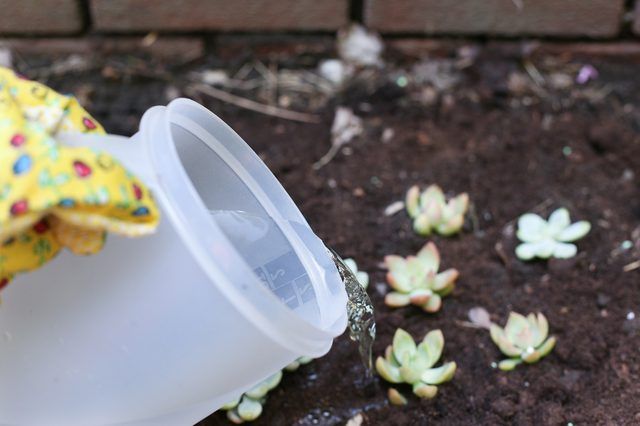Bulbs
Flower Basics
Flower Beds & Specialty Gardens
Flower Garden
Garden Furniture
Garden Gnomes
Garden Seeds
Garden Sheds
Garden Statues
Garden Tools & Supplies
Gardening Basics
Green & Organic
Groundcovers & Vines
Growing Annuals
Growing Basil
Growing Beans
Growing Berries
Growing Blueberries
Growing Cactus
Growing Corn
Growing Cotton
Growing Edibles
Growing Flowers
Growing Garlic
Growing Grapes
Growing Grass
Growing Herbs
Growing Jasmine
Growing Mint
Growing Mushrooms
Orchids
Growing Peanuts
Growing Perennials
Growing Plants
Growing Rosemary
Growing Roses
Growing Strawberries
Growing Sunflowers
Growing Thyme
Growing Tomatoes
Growing Tulips
Growing Vegetables
Herb Basics
Herb Garden
Indoor Growing
Landscaping Basics
Landscaping Patios
Landscaping Plants
Landscaping Shrubs
Landscaping Trees
Landscaping Walks & Pathways
Lawn Basics
Lawn Maintenance
Lawn Mowers
Lawn Ornaments
Lawn Planting
Lawn Tools
Outdoor Growing
Overall Landscape Planning
Pests, Weeds & Problems
Plant Basics
Rock Garden
Rose Garden
Shrubs
Soil
Specialty Gardens
Trees
Vegetable Garden
Yard Maintenance
How to Plant Sedum
How to Plant Sedum. Sedum (*Sedum spp.*), commonly known as stonecrop, grows in well-drained gardens and dry spots. The species include both succulent annual and perennial varieties, with evergreen or deciduous perennials thriving in U.S. Department of Agriculture plant hardiness zones 3 through 9. Plant sedums in full sun to light shade in spring...
Sedum (Sedum spp.), commonly known as stonecrop, grows in well-drained gardens and dry spots. The species include both succulent annual and perennial varieties, with evergreen or deciduous perennials thriving in U.S. Department of Agriculture plant hardiness zones 3 through 9. Plant sedums in full sun to light shade in spring in neutral to slightly alkaline soil, pH 6.6 through 7.8.
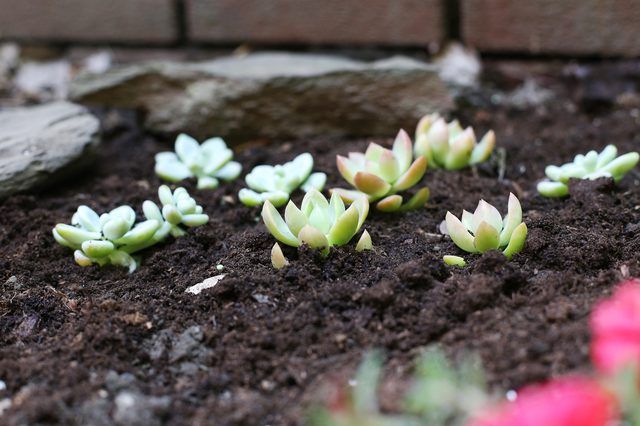
Hundreds of species of sedums provide a wide diversity among this group of succulents, with thick green, blue, russet or golden foliage. Flowers range in color from pink or red to yellow and white. Although most sedums prefer full or partial sun, certain varieties thrive in shade. In USDA zones 4 through 9, Sedum ellacombianum, with deep green leaves and yellow summer flowers, can grow in full sun, but prefers shade; and, Sedum sexangulare grows best in rich soil with ample moisture in full sun or medium shade. Sedum spurium "Fuldaglut" tolerates drought and shade, and its red color deepens in intensity during the winter months, where it grows in USDA zones 3 through 9. Sedum glaucophyllum has pale green, scalloped leaves, growing in rosettes. Forming dense mats with white flowers, this sedum grows best in partial shade in USDA zones 3 through 8.
Ranging in height from low, spreading plants to upright, 36-inch tall clumps, many sedum varieties grow well in shallow containers as long as they receive enough moisture to keep them from drying out completely and the containers drain. Use a potting mixture with 3 parts potting soil, 2 parts sand and 1 part leaf mold, recommends the American Horticultural Society A to Z Encyclopedia of Garden Plants.
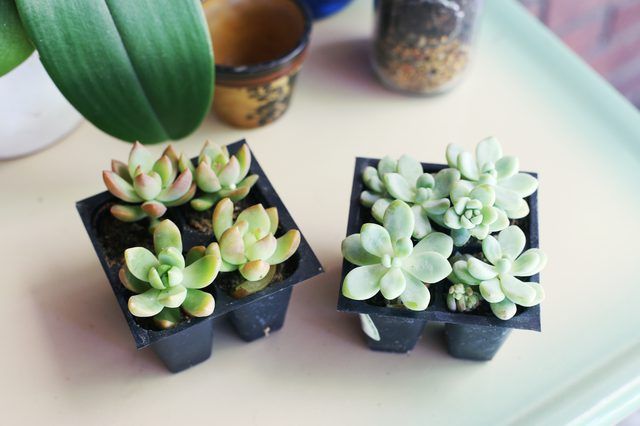
Apply 2 to 4 inches of compost or peat moss to compact soil. Using a garden fork or tiller on large areas, or a hand trowel in small areas, work the compost or peat moss into the soil, loosening the soil to a depth of 12 to 15 inches, where possible. Low growing, groundcover-type sedum and smaller varieties do not require deep soil, and can be planted in rock gardens and xeriscapes.
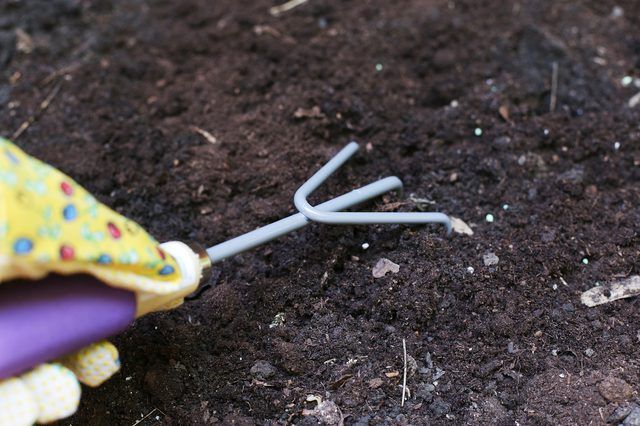
Sedums grow in poor soil; however, for best performance, fertilize lightly at planting time with 2 teaspoons per plant of bone meal or a balanced fertilizer blend, such as 8-8-8. Mix the fertilizer into the soil and water thoroughly, to avoid burning plant roots.
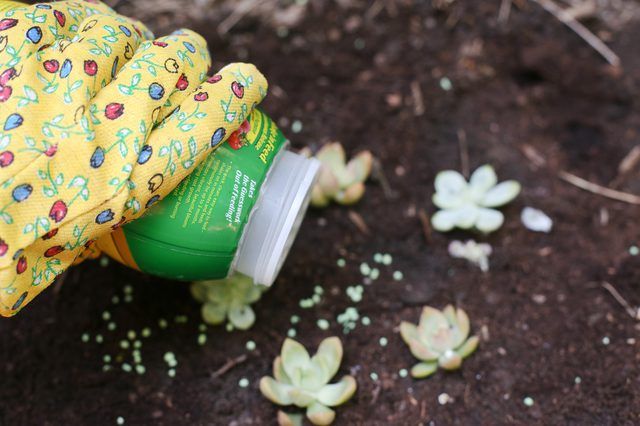
Plant annual sedums after all danger of frost has passed, and perennial sedums around the last frost date in spring.
Plant dormant, bareroot sedums with the base leaves and crown of the plant 1/2 to 1 inch below the soil surface. Unpack and plant sedums within one to two days of arrival. Avoid moisture condensation in the package before planting by making a few holes in the packing material.
For potted plants, dig a hole the same depth as the pot and twice as wide. Remove the sedum from the pot and place it in the center of the hole with the top of the rootball level with the top of the planting hole. Fill the planting hole with soil and lightly firm the soil around the rootball.
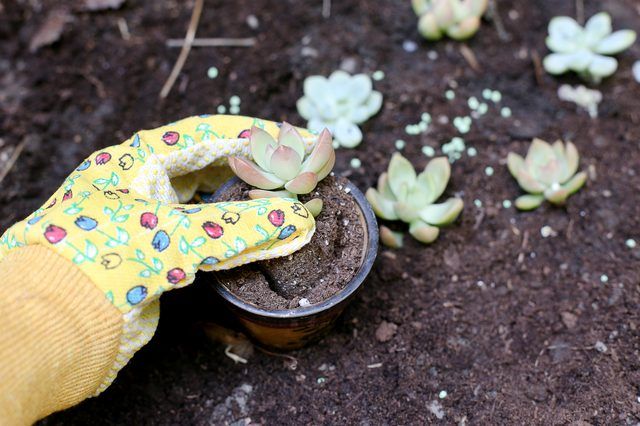
Water sedums at planting time. If the plants are dormant, water sparingly until they show signs of growth, just enough to keep soil from drying out completely if rainfall is inadequate. During active growth of sedums in well-drained soil, water weekly when rainfall does not average 1 inch per week. Avoid overwatering, as sedums grow best when they are on the dry side.
